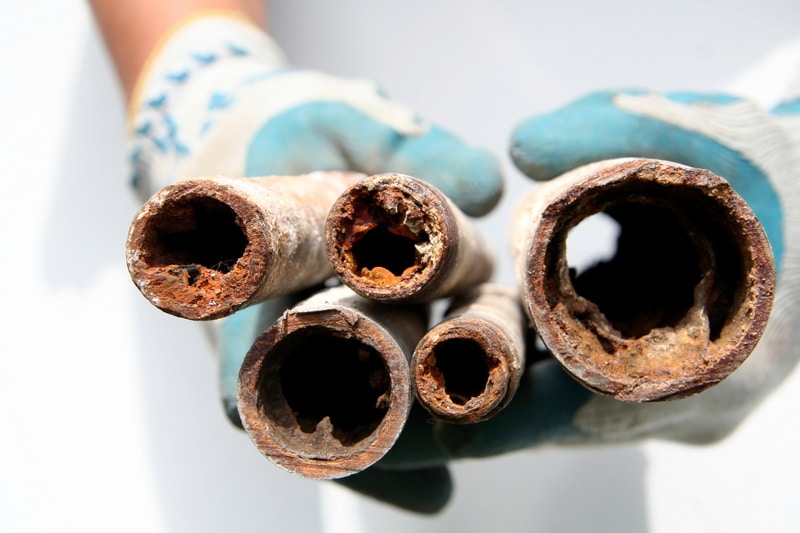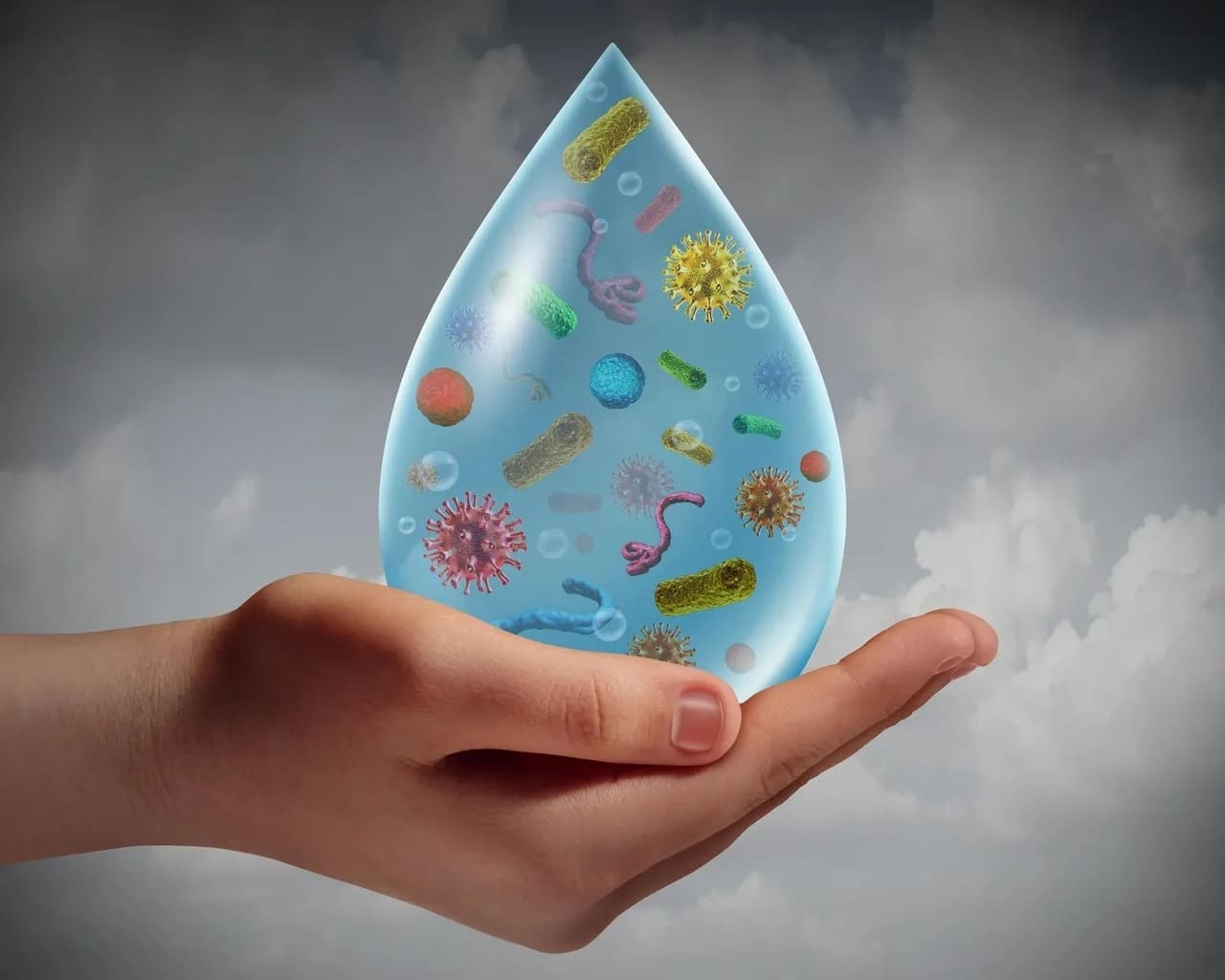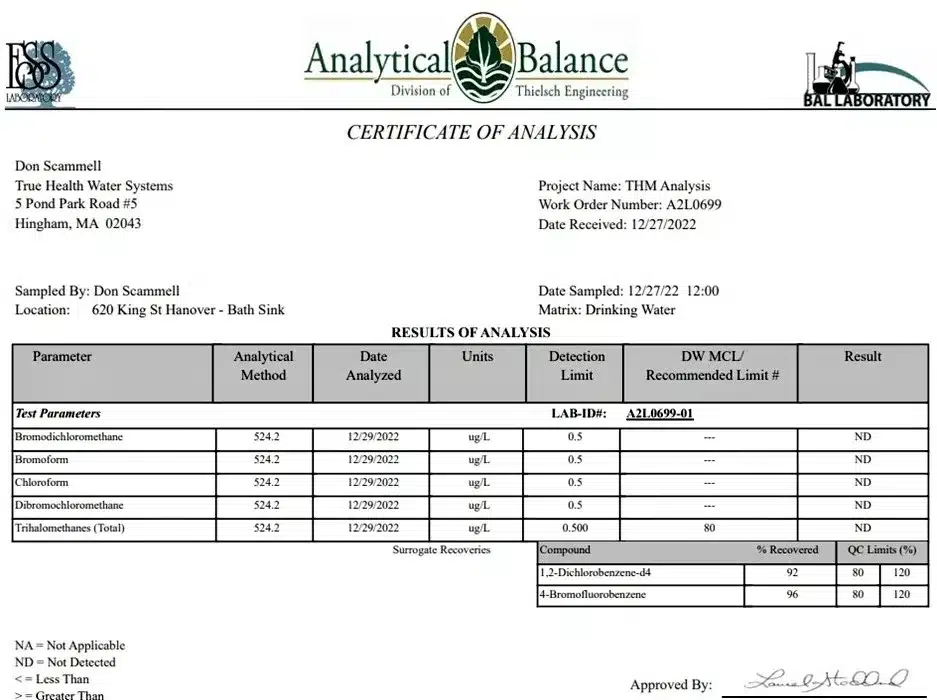Most people don’t trust their tap water enough to drink it. That is a common wisdom cultivated by the keen sense of not knowing what is in the water and wisely assuming that it may not be healthy. But there is also a common misunderstanding -how unsafe that same water is to bathe or shower in.
Consider the fact that your skin is your largest organ – uniquely designed to both protect your body’s blood stream, regulate temperature, and allow nutrients called essential minerals to enter the blood stream through your pores and into your blood stream. These are the essential minerals needed by your body as nutrients to battle contaminants all day long.
In the shower, two major things are at work: 1) The creation and releasing of toxins present in the water like chloroform and ammonia into the air and 2) the opening of your pores that increases chemical exposure to your blood stream.
In this blog you will find that truth about what happens when you turn your nice hot shower on to enjoy. The good news is that there is a solution for pure and healthy water to shower in that increases your health and peace of mind. Visit www.TrueHealthWaterSystems.com
Chlorine: Showers and Drinking
Chemicals like chlorine get into our bloodstream and bodies very efficiently through shower water because the shower provides the ideal venue. The warm shower expands the skin’s pores and therefore permits a high rate of absorption of chlorine and other harmful contaminants.
IT’S A CHEMICAL REACTION
Because chlorine has a much lower boiling point than water, it vaporizes more quickly. Therefore, the steam in the shower can contain as much as twenty times the level of chlorine as compared to water that pours from the tap.
The inhalation and absorption of these chemicals from the vapors routes them directly into the bloodstream without benefit of the body’s natural filtration systems.
THE DANGERS OF CHLORINE
Long suspected a cause of asthma and bronchitis, the inhalation of chlorine’s vapors acts as a harsh irritant to delicate lung tissue. As opposed to ingesting contaminants by drinking unpurified water, chemicals that are inhaled enter the bloodstream. Because they bypass both the liver and the kidneys, they have no opportunity to filter the toxins; thereby increasing chlorine’s harmful effects.
While chlorine is considered a leading cause of hair loss, some studies have also found that the hazards of inhaling chlorine can even exceed those derived from drinking chlorinated water. The quantity of chloroform (the most common trihalomethane found in chlorinated water), adsorbed through the course of the average shower can be up to six times more than the trihalomethane introduced into the body by drinking chlorinated water.
CLEAN WATER
Water is our most basic element essential for survival. Clean water is vital to maintain the proper functioning of our bodies and its systems from skin and organ integrity to a healthy immune system to longevity.
HAZARDOUS TO YOUR HEALTH
Facts, figures, and evidence have been stacking up for years about the unhealthy substances to which we unsuspectingly expose ourselves to on a daily basis. It is therefore imperative we guard ourselves against the destructive chemicals that serve to compromise our health and wellness.
SOME FACTS FROM THE EXPERTS
“Chlorine is the greatest crippler and killer of modern times. It is an insidious poison.”
Dr. Joseph M. Price, MD, in Moseby’s Medical Dictionary
“I am quite convinced, based on this study, that there is an association between cancer and chlorinated water.”
Robert D. Morris of the Medical College of Wisconsin in Milwaukee
The American Journal of Public Health recently linked chlorine to significant increases in certain types of cancer and stated that
“up to 2/3 of our harmful exposure comes from inhalation of steam while showering.”
The U.S. EPA recently released a report that said:
“Virtually every home in America has a detectable level of chloroform gas in the air due to chlorine and showering.”
In the January/February 1987 issue of Health Freedom News, this quote:
“The drinking of chlorinated water has finally been officially linked to an increased incidence of colon cancer. An epidemiologist at Oak Ridge Associated Universities completed a study of colon cancer victims and non-cancer patients and concluded that the drinking of chlorinated water for 15 years or more was conducive to a high rate of colon cancer.”
“Chlorine has so many dangers it should be banned. Putting chlorine in the water supply is like starting a time bomb. Cancer, heart trouble, premature senility, both mental and physical, conditions are attributable to chlorine treated water supplies. It is making us grow old before our time by producing symptoms of aging such as hardening of the arteries.”
Dr. Herbert Schwartz, Cumberland County College in Vineland, N.J.
A Norwegian study of 141,000 births over three years found a 14 per cent increased risk of birth defects in areas with chlorinated water. Scientists have already found an association between chlorine and an increased risk of bowel, kidney and bladder cancer, but it is the first time that a link has been found with higher levels of spina bifida.
The U.S. General Accounting Office reports that there are serious deficiencies in water treatment plants in 75% of the states. More than 120 million people (about 50% of the population) may get unsafe water according to a study conducted by the Natural Resources Defense Council.
“The drinking of chlorinated water has finally been officially linked to an increased incidence of colon cancer. An epidemiologist at Oak Ridge Associated Universities completed a study of colon cancer victims and non-cancer patients and concluded that the drinking of chlorinated water for 15 years or more was conducive to a high rate of colon cancer.”
Health Freedom News, January/February 1987
“Long-term drinking of chlorinated water appears to increase a person’s risk of developing bladder cancer as much as 80%,” according to a study published in the Journal of the National Cancer Institute. Some 45,000 Americans are diagnosed every year with bladder cancer.”
St. Paul Dispatch & Pioneer Press, December 17, 1987
Showering in Chlorinated Water: Quotes from Respected Authorities
“Americans are becoming more aware of the contaminants in our nation’s water supplies and many are installing water filters to purify their drinking water. Yet most continue to bathe and shower straight from the tap, unaware that inhaling unfiltered shower vapors (steam) is more harmful than actually drinking the water itself. During a shower, toxic chloroform evaporates into the surrounding air you breathe. In addition, The Center for Study of Responsive Law’s, Troubled Water on Tap report, states that over 2,100 contaminants have been found in drinking water. Of those 2,100, 190 are known to cause adverse health effects. In total, 97 carcinogens, 82 mutagens and suspected mutagens (cause cell mutations), 23 tumor promoters and 28 acute and chronic toxic contaminants have been detected in U.S. drinking water. According to East West magazine, consumers should purchase shower head filters which remove chlorine and other contaminants to prevent exposure to chloroform [and other toxic substances].”
Center for Study of Responsive Law, Consumers Research Magazine, East West, July 1989.
“A long, hot shower can be dangerous. The toxic chemicals are inhaled in high concentrations.”
August 1987, J Andelman, Ph. D.
“We conclude that skin absorption of contaminants in drinking water has been underestimated and that ingestion may not constitute the sole or even primary route of exposure.”
American Journal of Public Health, May, 1984, Vol. 74, No. 5
“Ironically, even the Chlorine widely used to disinfect water produces Carcinogenic traces. Studies indicate the suspect chemicals can also be inhaled and absorbed through the skin during showering and bathing.”
U. S. News & World Report – 29 July 1991, Is your Water Safe – The Dangerous State of Your Water
“Taking showers is a health risk, according to research presented last week in a meeting of the American Chemical Society. Showers – and to a lesser extent baths – lead to a greater exposure to toxic chemicals contained in water supplies than does drinking water. The chemicals evaporate out of the water and are inhaled. They can also spread through the house and be inhaled by others.”
New Scientist -18 September 1986, Ian Anderson
“Studies have documented the presence in the drinking water of many potentially toxic volatile organic chemicals (VOC’s)- from chloroform and pesticides to carbon tetrachloride. Such findings have spurred investigations into the inhalation hazards these compounds may pose when released in the air during baths and showers. However, because shower and tub equipment, as well as other design features, differed widely in these experiments, air releases for a single VOC could vary up to 10-fold from one studied system to another.”
John C. Little, Lawrence Berkeley (California) Laboratory, Science News, August 15, 1992
“The steamy air of a shower contains significant amounts of a least two cancer-causing chemicals that evaporate out of water.”
J Andelman, Professor of Water Chemistry, University of Pittsburgh
“Almost two decades have passed since known or suspected human carcinogens were first found in municipal water supplies. One of them, chloroform, produced by the chlorination process, exposes millions of Americans. The potential for a major public health problem is unquestionably there, and yet, progress has been slow.”
Dr. Peter Isacson, M.D., Professor of Epidemiology, Department of Preventive Medicine, University of Iowa College of Medicine
“Skin absorption of contaminant has been underestimated and ingestion may not constitute the sole or even primary route of exposure.”
American Journal of-Public Health – Dr. Halina Brown
“Showering is suspected as the primary cause of elevated of chloroform in nearly every home because of the chlorine in the water. Chloroform [a known carcinogen] levels increase up to 100 times during a ten-minute shower in residential water”
Environmental Protection Agency – Dr. Lance Wallace
“I tell my friends to take quick, cold showers”, said Julian B. Andelman, Professor of Water Chemistry, University of Pittsburgh, who claimed that the longer and hotter the shower, the more chemicals build up in the air.“
San Jose Mercury News, September 11, 1986
“Many investigators have reported on the toxicity and unexpected high penetration rates of volatile organic chemicals.”
American Journal of Public Health
“A Professor of Water Chemistry at the University of Pittsburgh claims that exposure to vaporized chemicals in the water supplies through showering, bathing, and inhalation is 100 greater than through drinking the water.”
The Nader Report, Troubled Waters on Tap – Center for Study of Responsive Law
“The National Academy of Sciences estimates that 200 to 1000 people die in the United States each year from cancers caused by ingesting the contaminants in water. The major health threat posed by these pollutants is far more likely to be from their inhalation as air pollutants. The reason that emissions are high is because water droplets dispersed by the shower head have a larger surface-to-value ratio than water streaming into the bath.”
Science News-Vol. 130, Janet Raloff
Human respiratory uptake of chloroform and haloketones during showering.
Abstract
Inhalation is an important exposure route for volatile water contaminants, including disinfection by-products (DBPs). A controlled human study was conducted on six subjects to determine the respiratory uptake of haloketones (HKs) and chloroform, a reference compound, during showering. Breath and air concentrations of the DBPs were measured using gas chromatography and electron capture detector during and following the inhalation exposures. A lower percentage of the HKs (10%) is released from shower water to air than that of chloroform (56%) under the experiment conditions due to the lower volatility of the HKs. Breath concentrations of the DBPs were elevated during the inhalation exposure, while breath concentrations decreased rapidly after the exposure. Approximately 85-90% of the inhaled HKs were absorbed, whereas only 70% of the inhaled chloroform was absorbed for the experiment conditions used. The respiratory uptake of the DBPs was estimated using a linear one-compartment model coupled with a plug flow stream model for the shower system. The internal dose of chloroform normalized to its water concentration was approximately four times that of the HKs after a 30-min inhalation exposure. Approximately 0.3-0.4% of the absorbed HKs and 2-9% of the absorbed chloroform were expired through lung excretion after the 30-min exposure. The inhalation exposure from a typical 10-15 min shower contributes significantly to the total dose for chloroform in chlorinated drinking water but only to a moderate extent for HKs.
Assessment of lifetime exposure to trihalomethanes through different routes.
Respiratory and Environmental Health Research Unit, Institut Municipal d’Investigació Mèdica (IMIM), Barcelona, Spain. cvillanueva@imim.es
Abstract
OBJECTIVES:
To evaluate lifetime exposure to trihalomethanes (THM) through ingestion, inhalation, and dermal absorption in a hospital based case-control study of bladder cancer conducted between 1998 and 2001 in five areas of Spain. The study base was comprised of subjects living in the catchment areas of the participating hospitals.
METHODS:
Individual information on water related habits was obtained from personal interviews of 1219 cases and 1271 controls: residential and occupational history, drinking water source at each residence and job, amount of water consumption, frequency and duration of showering, bathing, and swimming pool attendance. THM levels, water source history, and year when chlorination started in study areas were ascertained through measurements in drinking water samples and questionnaires to water companies and local authorities. Estimates of THM levels covered 79% of the subjects’ person-years of exposure.
RESULTS:
Current and historical average THM levels in water were correlated. Control subjects reported that drinking water source in the last residence was municipal for 63%, bottled for 22%, private well for 2%, and other sources for 13%. For the time window between age 15 and the time of interview, average residential THM level was 32.2 mug/l. THM exposure through ingestion was 23.7 mug/day on average, and was correlated with the ingestion THM level in the workplace. Overall, 79% usually took showers, 16% usually took baths, and 13% had ever attended a swimming pool. Between 21% and 45% of controls unexposed to THM through ingestion were evaluated as moderately or highly exposed through showering or bathing, and 5-10% were exposed through swimming in pools.
CONCLUSION:
Individuals are faced with a real dilemma concerning the truly toxic state of most of this country’s treated water – protect themselves by not using it for drinking, cooking, or hot showers or to install a point of entry whole-house water filtration and purification system proven to adequately remove these toxins so you can actually use and enjoy your water.
Latest posts
Please feel free to read my blogs and gain a better insight into water issues and facts.
-
Read more
December 2022 THM test results in Hanover, Scituate, and Hingham
True Health Water Systems tests there True-Pure 3000 THM line every 6 months at 14 instal...




